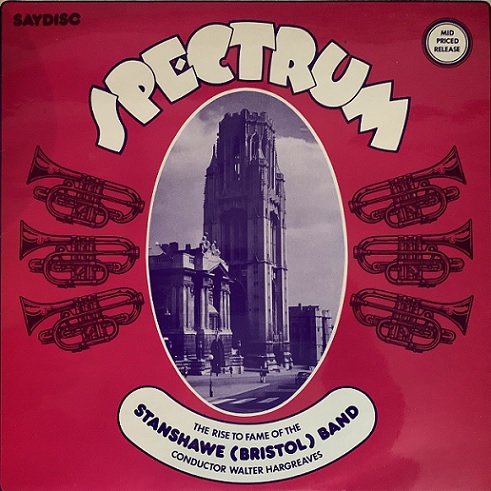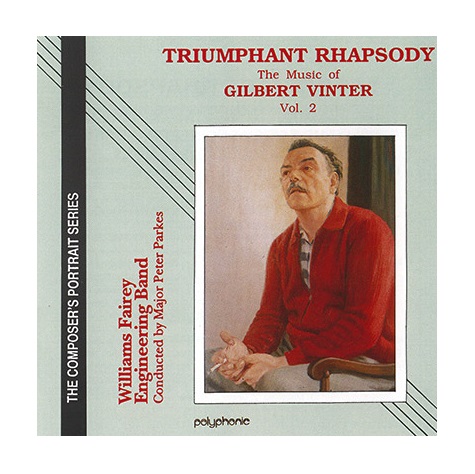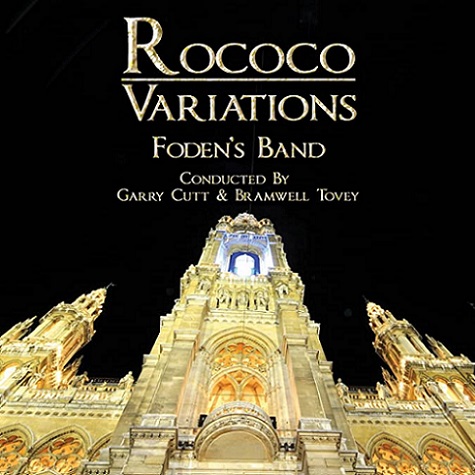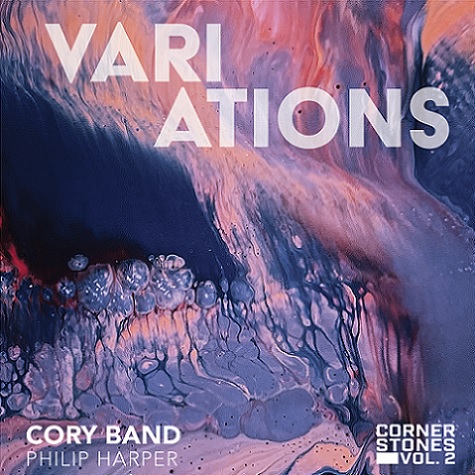Five recordings of Gilbert Vinter’s ‘Variations on a Ninth’ that should be added to any brass band collection.

Following the popular success of ‘Salute to Youth’ in 1961, and ‘Symphony of Marches’ in 1963, Gilbert Vinter was commissioned to write ‘Variations on a Ninth’ for the 1964 National Championships of Great Britain.
Vinter had already opened an exciting doorway to the future – one that few until his passing in 1969 perhaps fully appreciated at the time. The possibilities within his grasp were almost limitless.
‘Variations on a Ninth’ is a brilliant example of his craftsmanship – perhaps even too easy at times, for it is almost too clever a set of condensed variations (the score states a duration of 11 minutes). It has been described as being ‘facile’ – but perhaps in the sense that it was effortless in its intellect rather than shallow and superficial in its structure.

Layers of invention
Ostensibly based on the interval of a ninth explored in nine variations, closer examination reveals capricious, witty layers of invention; the falling and then rising thirds of the triplet opening that then fall once more in semi quavers to the first chord of a ninth, to the irregular rhythms and sardonic changes of pace (many of the tempo marking divisible by nine), chords (many subtly structured in dissonance ninths and more – even a 13th in one place) and style.
Given its lean structure compared to today’s somewhat blubberous variant concoctions, you wonder just how inventively brilliant he could have made the work had he was allowed free rein.
Vinter effortlessly moves from abandoned waltz to a longing euphonium and cornet duet, brilliant cadenzas and repiano led surprise to an ecstatic finish without once having to force the music through misplaced artifice.
Given its lean structure compared to today’s somewhat blubberous variant concoctions, you wonder just how inventively brilliant he could have made the work had he was allowed free rein.
There have been quite a few recordings over the years – official and unofficial (from the contest or concert stage), but these are five (in chronological order) we think you should seek out and add to your collection.
Iwan Fox
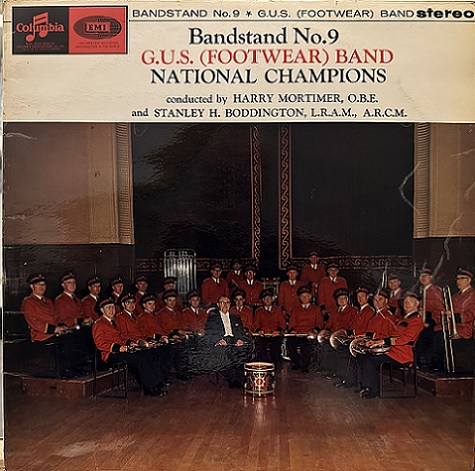
GUS (Footwear) Band (1965)
Conductor: Stanley Boddington
Bandstand No. 9
EMI SCX 3550 with reissue on TWO 379
There is an illicit recording of the actual winning performance at the Royal Albert Hall in 1964 which due to its quality rather robs it of its mystic brilliance (although there is no mistaking the reality of the reaction that greats it about four bars before it ends).
Sharp, precise and biting like a Dorothy Parker one-liner delivered in variant forms.
This though surely came close – made soon after and featuring a great team of no nonsense cadenza soloists in Emlyn Bryant, John Cobley, George Beardsley, Trevor Groom and John Berryman, whilst Stanley Boddington captures the light, clever wit of the writing to a tee – the high pitch instruments giving the tonal quality a real deftness.
Sharp, precise and biting like a Dorothy Parker one-liner delivered in variant forms.
Stanshawe (Bristol) Band (1974)
Conductor: Walter Hargreaves
Spectrum – The Rise to Fame of the Stanshawe (Bristol) Band
Saydisc SDLB 262 with reissue on SDL 262 on CD
A wonderfully lithe interpretation by the ‘Wee Professor’ at the zenith of his genius, with a band moulded to his musical persona. There is an underlying muscularity about the playing right from the most brilliant of starts – the soloists, led by an imperious Lyndon Baglin perhaps dominating the focus at times, but still so certain in purpose.
However, it is the subtle shifts in the style that really capture the ear; the tempos calibrated perfectly to enhance the effect, the sardonic humour never far from the surface.
Hargreaves takes a few little liberties at times, but gloriously so, the musical heart of the music never missing a beat.
Williams Fairey Engineering (1994)
Conductor: Major Peter Parkes
Triumphant Rhapsody – The Music of Gilbert Vinter Vol. 2
Polyphonic Recordings: QPRL 068D
Peter Parkes provides a gloriously mature appreciation of the Vinter score with a band at the apex of their powers. Richly textured and considered in pacing (over a minute longer compared to the earlier readings) it nevertheless loses nothing in delicacy or rapier sharp wit.
The soloists are supreme – artistic in their virtuosity on the cadenzas and beautifully refined in their leading lines (led by a superb Brian Taylor on cornet), the ensemble clear, balanced and compactly sonorous.
The soloists are supreme – artistic in their virtuosity on the cadenzas and beautifully refined in their leading lines (led by a superb Brian Taylor on cornet), the ensemble clear, balanced and compactly sonorous.
It is Parkes who commands though (as he does throughout the CD); each variation packed with character and intuitive appreciation, the music at his and Vinter’s behest.
To enjoy:
Foden’s Band (2009)
Conductor: Garry Cutt
Rococo Variations
Egon Recordings: SFZ 148
Garry Cutt is perfectly at home with Vinter’s capricious intentions in a reading that almost, but not quite also pays homage to Peter Parkes.
The pacing and characterisation (the classiest of cadenzas) is certainly cut from the same musical cloth, although the generous acoustic just loses a little of the razor-sharp clarity of the Parkes recording.
The pacing and characterisation (the classiest of cadenzas) is certainly cut from the same musical cloth, although the generous acoustic just loses a little of the razor-sharp clarity of the Parkes recording.
The shaping and moulding of the variations though marries subtlety with generous splashings of emotion – always tasteful in its refinement and aided by a heavyweight band commanded with authority by the MD that remains balanced and nimble on its feet throughout.
To enjoy:
Cory Band (2023)
Conductor: Philip Harper
Variations
Doyen Recordings: DOY CD 421
A splendid revivalist interpretation by Philip Harper that seeks the precise, capricious temperament of the Vinter score leaving no stone unturned.
The essence of Vinter is unmistakable, but so too an appreciation of the nonsense approach of Boddington, the waspishness of Hargreves and the maturity of Parkes and Cutt in an amalgam performance of considered authority.
The balance between the virtuosic and the emotive, the clear and the opaque are carefully realised – the cadenzas and lead lines played with a fluid directness that propel the music ever forward, the ensemble balance rich and bold, but also lithe and taut.
The essence of Vinter is unmistakable, but so too an appreciation of the nonsense approach of Boddington, the waspishness of Hargreves and the maturity of Parkes and Cutt in an amalgam performance of considered authority.
To enjoy:

